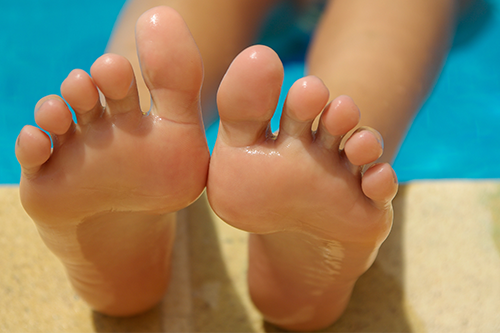
Plantar Fasciitis is the most common cause of heel pain. It can happen to anyone, but it is most common in middle aged people, and those that are on their feet a lot. The pain associated with the condition can be disruptive to everyday life and unpleasant, but it is treatable and relief is possible.
What is Plantar Fasciitis?
The plantar fascia is a ligament, or band of tissue, that connects your heel to your toes, supporting the arch of the foot. If this ligament gets strained, it can become weak, irritated, and inflamed, causing pain, especially in the heel or the bottom of the foot.
What Can Cause Plantar Fasciitis?
Anything that can strain the ligament supporting the arch of your foot could cause plantar fasciitis. Repeated strain can lead to small tears in the ligament, causing pain and swelling. The most common ways that people injure this ligament and develop pain include:
- Feet rolling inward too much when you walk, otherwise called excessive pronation
- A lifestyle that includes walking, standing, or running for long periods of time, especially if these activities are done on hard surfaces
- Wearing shoes that don’t fit properly or are worn out
- Being overweight
- Having particularly high arches or flat feet
- Having tight calf muscles or achilles tendons
Plantar fasciitis is often the result of long-term damage, so the symptoms might appear gradually as damage occurs. While catching it early can certainly help to expedite the healing process, relief is possible for people at any stage. Most of the healing process focuses on preventing the factors that might be leading to the initial damage.
Symptoms of Plantar Fasciitis
The most common sign of plantar fasciitis is pain occurring when the first steps are taken out of bed in the morning or after sitting for a long time. Most people find that their stiffness and pain is reduced after they have taken a few steps, though in some cases the foot may actually hurt more as the day goes on. Plantar fasciitis pain may be at its worst after climbing stairs or after standing for extended periods of time.
Not all foot pain is related to plantar fasciitis, though. Other common complaints like foot pain at night, or foot pain radiating up the front of the shin could be from other issues like arthritis, nerve issues, or shin splints. Many of these conditions are also treatable, but will require different specialized care than plantar fasciitis.

Tips for Dealing with Plantar Fasciitis Pain?
The best way to handle foot pain is to talk to your doctor about it. This way you and your medical team can come up with a specific diagnosis and develop a treatment plan that caters towards your specific needs.
For relief of mild plantar fasciitis pain at home, try these tips:
- Give your feet a rest but cutting back on activities that make them hurt. For example, try to reduce how much you walk, stand, or run on hard surfaces
- Icing your heel may provide some relief for your pain
- Get a new pair of shoes that is supportive and has a cushioned sole. If you need to keep the shoes that you have, you might want to consider heel cups or orthotic shoes inserts to help support your foot more during your daily activities. Even if only one foot hurts, you’ll want to use orthotics in both shoes to maintain balance.
Plantar fasciitis can be unpleasant or even disruptive, but it doesn’t have to be. If you are experiencing heel pain, consider talking to your doctor to be diagnosed and find effective ways to address your discomfort.